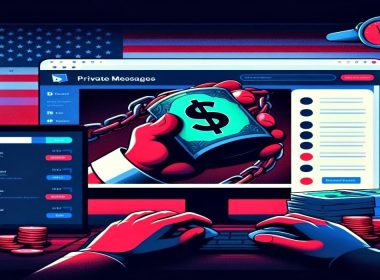Latest News
AeroNet Wireless Launches 10Gbps Internet Plan: A Landmark Moment in Puerto Rico’s Telecommunications Industry
San Juan, Puerto Rico, April 25th, 2024, CyberNewsWire The telecom company AeroNet Wireless announced the launch of its new 10Gbps speed…
NDR in the Modern Cybersecurity Landscape
The role of Network Detection and Response (NDR) in cybersecurity. Learn how NDR tools empower organizations to tackle evolving threats effectively.
Google Patches Critical Chrome Vulnerability and Additional Flaws
Using Google Chrome? Update your browser to the latest version right now!
Popular File Transfer Software CrushFTP Hit by Zero-Day Exploit
Popular File Transfer Software Hit by Zero-Day Exploit: Millions Potentially Exposed – Install Patches Right Now!
Dexalot Announces Launch of Its Central Limit Order Book DEX on Arbitrum
Central limit order book (CLOB) decentralized exchange Dexalot has announced it is launching on Arbitrum. The move marks the first step in…
Russian APT28 Exploiting Windows Vulnerability with GooseEgg Tool
Update Windows Now or Get Hacked: Microsoft Warns of Actively Exploited Vulnerability!
Popular Keyboard Apps Leak User Data: Billion Potentially Exposed
Popular keyboard apps leak user data! Citizen Lab reports 8 out of 9 Android IMEs expose keystrokes. Change yours & protect passwords!
Nespresso Domain Hijacked in Phishing Attack Targeting Microsoft Logins
Coffee with Double Brew of Trouble!
0G and OnePiece Labs Collaborate to Create Crypto x AI Incubator
0G Labs and One Piece Labs have announced the launch of the first incubator for startups working at the intersection between blockchain and…
GitHub Comments Abused to Spread Malware in Fake Microsoft Repositories
Hackers are exploiting GitHub comments to spread malware disguised as Microsoft software downloads tricking users into downloading malware.
This Website is Selling Billions of Private Messages of Discord Users
Millions of Discord messages sold online! Protect yourself from leaked usernames, photos & financial details. Learn how to secure your Discord…
Malvertising: Fake Popular Software Ads Deliver New MadMxShell Backdoor
IT professionals are under attack! This article exposes a malicious malvertising campaign targeting IT teams with a novel backdoor named…

















